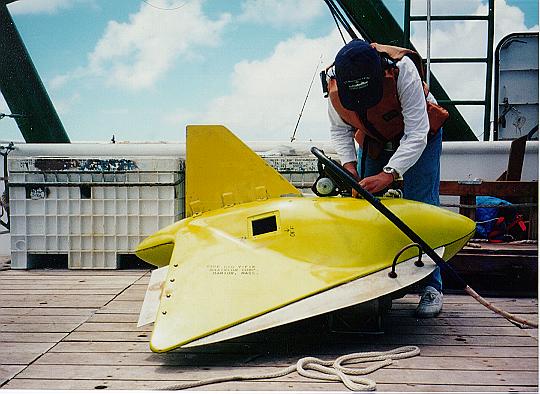|
Hawaii Ocean Time-series (HOT)
in the School of Ocean and Earth Science and Technology at the University of Hawai'i at Manoa |
|
| » Home » Analytical Results » Towed Instrumentation | |
Towed InstrumentationDISCONTINUED 
Sampling ProcedureBefore the return transit to Honolulu, a series of transacts are made within the 6 nautical mile radius of Station ALOHA to obtain data from a towed instrument package consisting of an Endeco Instruments 1.5 m fin, a Sea-Bird (SBE-19) CTD and a Focal Instruments Optical Plankton Counter (OPC). This is a joint project between the HOT core component and scientists from Scripps Institution of Oceanography (Mark Huntley, P.I.) which started with HOT-60 (February 1995). A WetLabs SeaStar fluorometer was added to the package for HOT-64 (July 1995). The package is deployed on a 3-conductor cable and towed at a constant depth at a speed of 8 knots. The package collects data on physical (temperature and conductivity) and biological (zooplankton biomass and size spectrum, chlorophyll a) variability in the mixed-layer of the water column. The sampling pattern typically consists of zigzags within a square extending from 22.65' N to 22.85' N, 157.9' W to 158.1' W, and a transect along the regular ship track into Honolulu. In 1996 the target towing depth was 45 m, with variations of approximately ± 5 m due to changes in ship speed and heading. ResultsA 3-dimensional plot of particle counts at 45 m and grouped in size classes for 1996 is shown in Figure 66. A similar plot of particle volume relative to size class is shown in Figure 67. This figure shows that although most of the particles are in the smaller size range, mid-size particles dominate the spectrum on a per volume basis. | |

